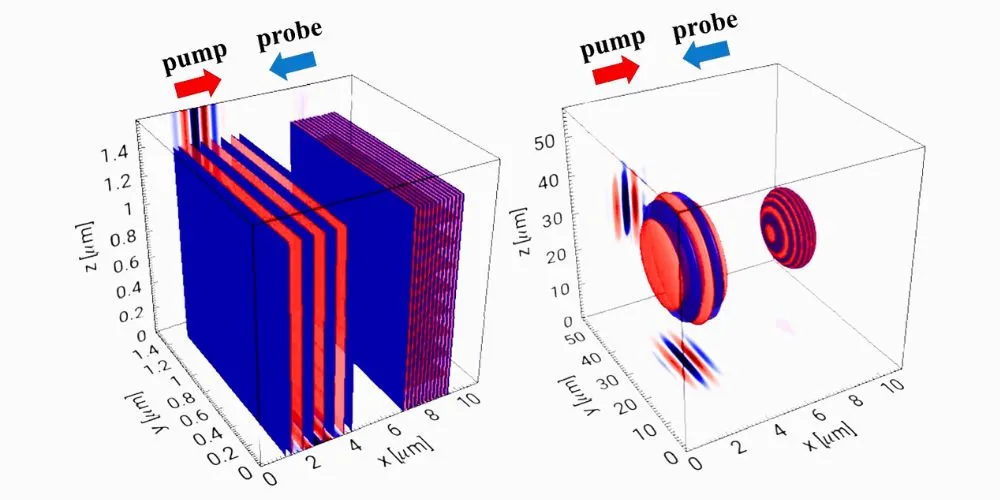Key Points
- First real-time 3D simulation of quantum vacuum interactions achieved.
- Simulations reveal photon-photon scattering via vacuum four-wave mixing.
- Work supports upcoming ultra-intense laser experiments worldwide. The tool may help detect dark matter candidates, such as axions.
- Research enables more precise design of future high-energy physics tests.
A groundbreaking collaboration between the University of Oxford and the Instituto Superior Técnico at the University of Lisbon has led to the first-ever real-time, 3D simulations of how intense laser beams interact with the quantum vacuum—a space previously thought to be empty but known in quantum theory to teem with virtual particles.
The simulations replicate a rare quantum phenomenon called vacuum four-wave mixing, where three powerful laser pulses polarize virtual electron-positron pairs in the vacuum. This interaction causes photons to scatter off each other—something normally impossible in classical physics—resulting in the emission of a fourth laser beam. This “light from darkness” phenomenon is a dramatic illustration of quantum mechanics in action.
“This is a major step toward confirming theoretical quantum effects experimentally,” said Professor Peter Norreys, co-author from Oxford’s Department of Physics. The findings have been published in Communications Physics.
The timing of this research is critical, coinciding with the rise of next-generation ultra-powerful lasers, including the UK’s Vulcan 20-20, the European ELI project, and China’s SHINE and SEL facilities. These advanced systems are reaching the energy levels needed to potentially observe photon-photon scattering in a laboratory setting for the first time.
The team used an advanced version of OSIRIS, a simulation software designed to model interactions between lasers and matter. Lead author Zixin (Lily) Zhang, a doctoral student at Oxford, said their software provides an unprecedented time-resolved, 3D view into quantum vacuum dynamics.
These simulations offer vital insights into laser pulse geometry, timing, and subtle asymmetries, allowing experimentalists to design precise high-energy experiments. The work also opens doors for probing hypothetical particles, such as axions and millicharged particles, which are potential candidates for dark matter.
According to co-author Professor Luis Silva, the research represents a significant leap forward in planning quantum laser experiments. It may herald a new era in fundamental physics through laser-matter interactions.










